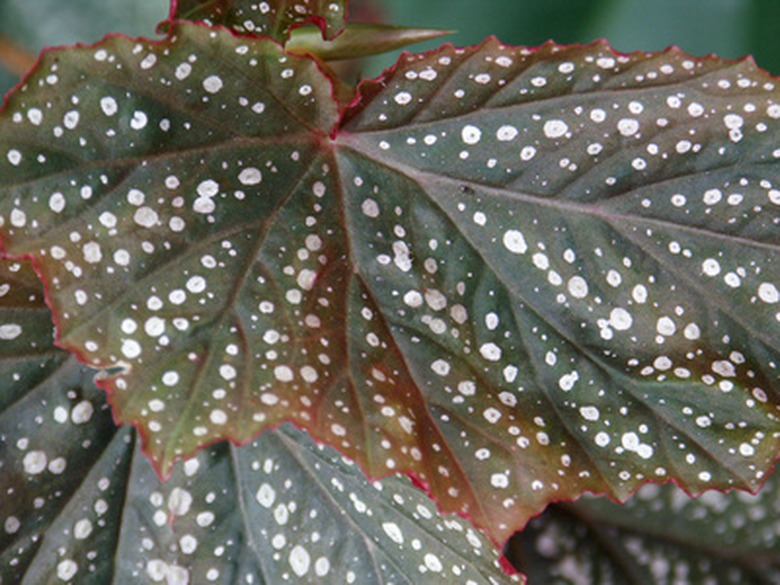Rex Begonia Mold Problems
Rex begonias are grown for the colorful and spectacular foliage and make excellent houseplants. Their leaves can be streaked, bordered, spotted or splotched with red, green, white and even silver. While they can be harder to cultivate than other begonias and are prone to fungal attack and mold, the extra effort is worthwhile. They need cool but humid conditions and will not tolerate wet soil or still air.
Causes
Rex begonias have specific growing requirements and will succumb to mold and fungal attack if they are not cared for. Overwatering is the main cause of mold problems in rex begonias, and waterlogged soil will cause mold attack in a short time. Rexes like humid air but do not like wet foliage. Leaving water pooled on the leaves over night or misting in the evening can cause mold. A lack of airflow prevents water from evaporating and slows down transpiration, leaving the plants vulnerable to fungal attack.
- Rex begonias are grown for the colorful and spectacular foliage and make excellent houseplants.
- Overwatering is the main cause of mold problems in rex begonias, and waterlogged soil will cause mold attack in a short time.
Diagnosis
A rex begonia suffering from mold may have discolored leaves with soft stems or patches of gray or black mold growing on the leaves. Soft or droopy leaves accompanied by wet brown spots is a sign of infection by botrytis blight. Damp soil may cause fungus infection at the base of the stem, causing the plant to topple over.
Treatment
Treat any rex begonia you suspect of having a mold problem with a fungicidal spray from a gardening center. Treat any other begonias in the area to prevent the fungus from spreading. Remove any discolored leaves and or soft stems. Reduce watering for any begonia that has a mold problem and increase air circulation by opening a window or moving the plant to a higher location.
- A rex begonia suffering from mold may have discolored leaves with soft stems or patches of gray or black mold growing on the leaves.
Prevention
Remove all dead leaves and debris from around begonias to prevent the growth of mold. Do not allow any water to pool on the surface of the leaves after watering and avoid wetting the leaves at all during the evening. To prevent mold from taking hold, make sure your rex is growing in open compost that is allowed to drain fully after watering. Water little and often and aim to moisten rather than soak the compost. Allow the surface of the compost to dry out between watering. Do not mist the plants directly but mist the surroundings. Make sure your rex is in an area with good air movement.
- Remove all dead leaves and debris from around begonias to prevent the growth of mold.
- To prevent mold from taking hold, make sure your rex is growing in open compost that is allowed to drain fully after watering.
Rescue
A badly damaged rex begonia can sometimes be rescued from fungal attack by removing all infected parts. If the fungus continues to spread, then cuttings can be taken from any healthy parts or even from individual leaves. Select a large fungus-free leaf and cut across the leaf veins to produce several pieces at least an inch across and 3 inches long. Lay the leaf parts on a damp medium made up of 50 percent peat or sphagnum moss and 50 percent perlite or vermiculite. New plants will grow from the cut veins, provided the pot is kept in a humid place.
